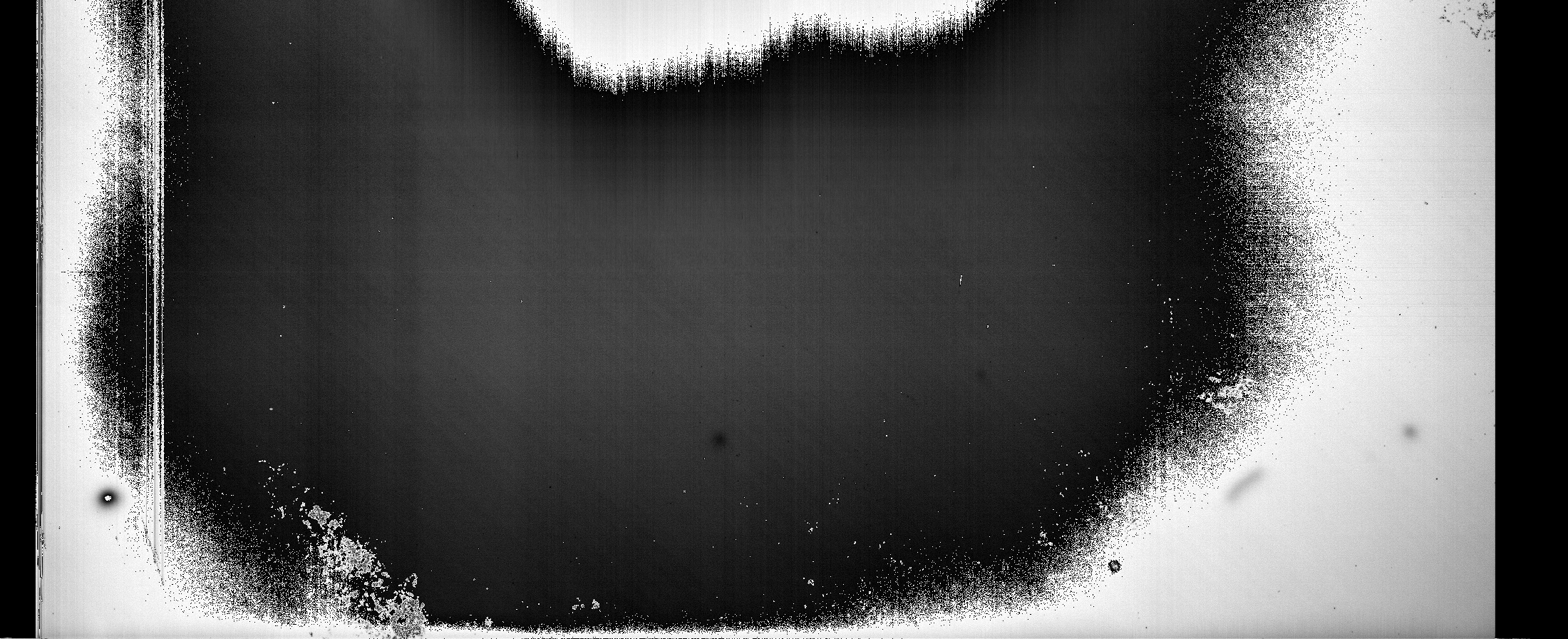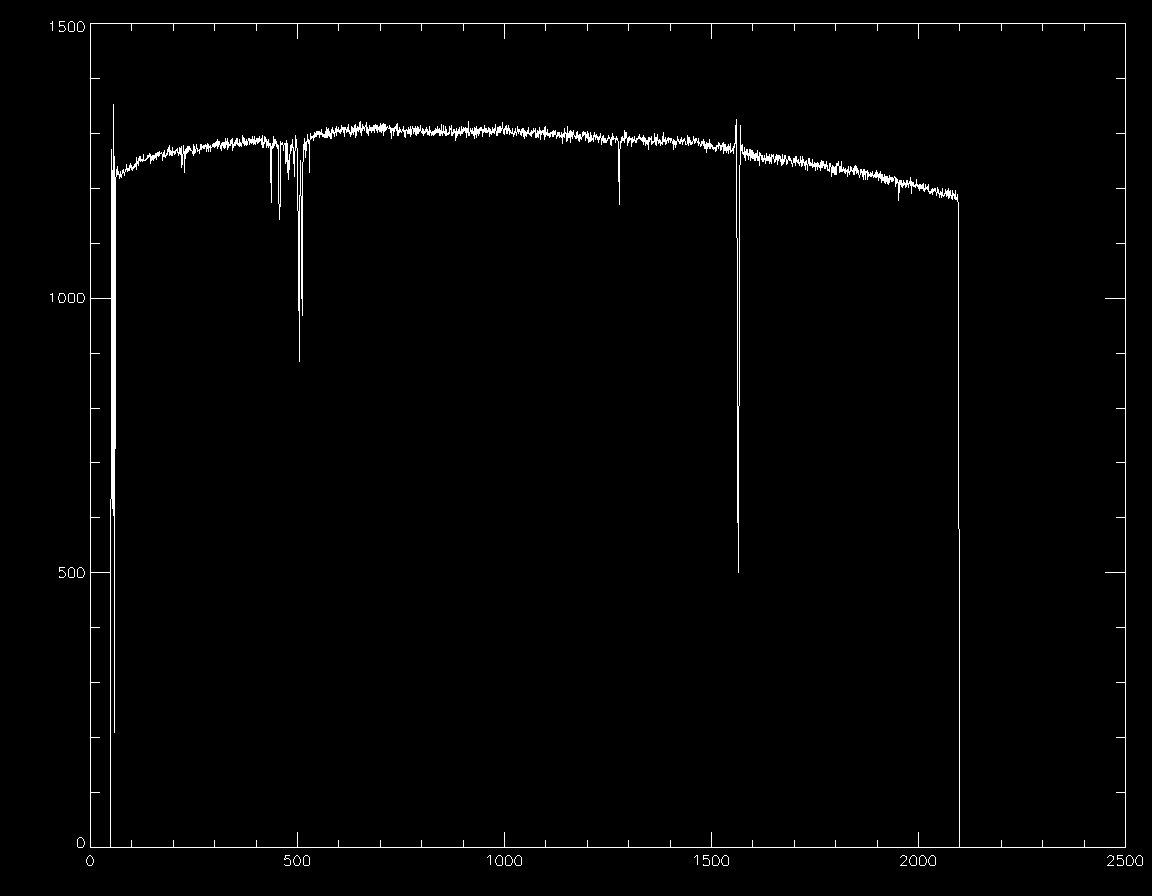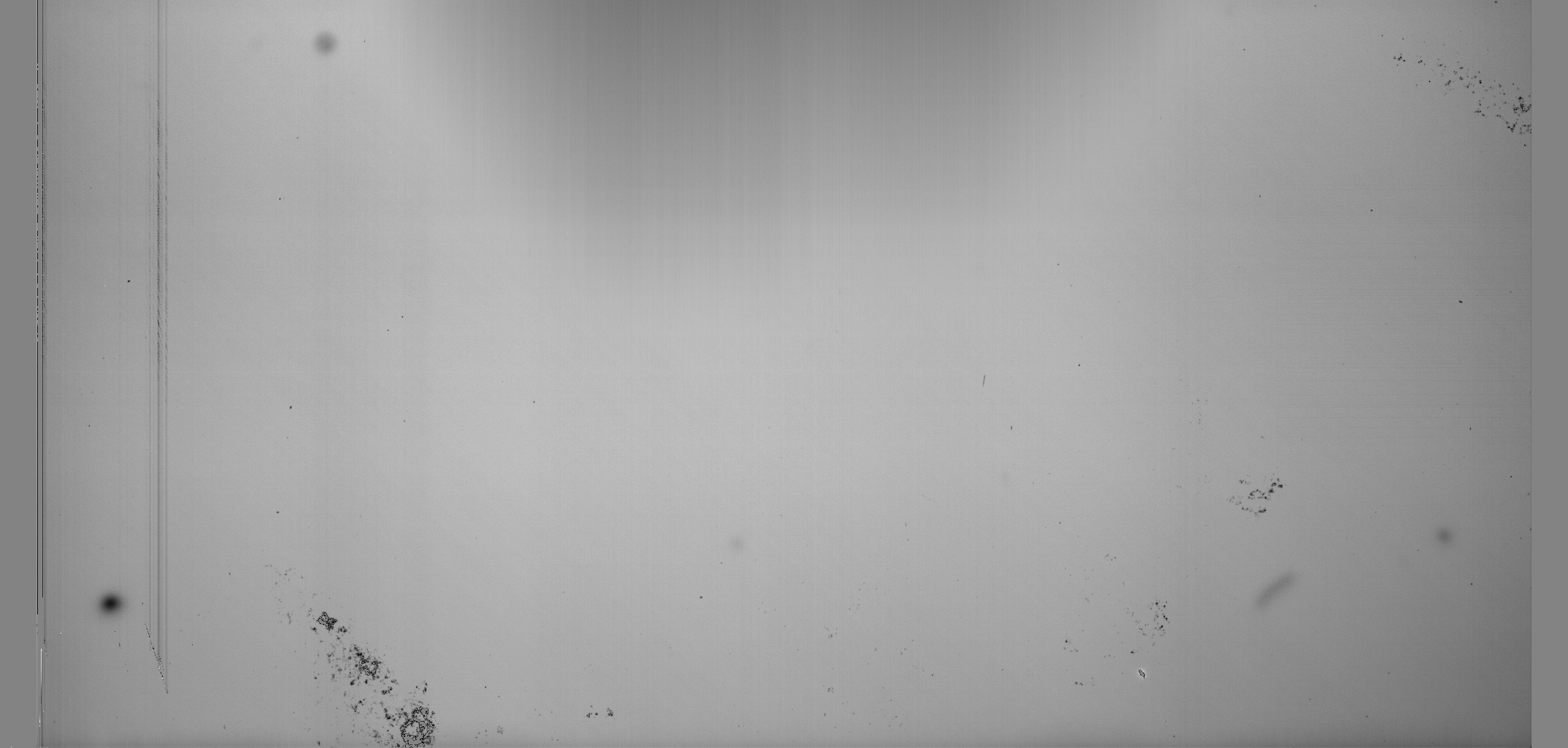
| Solar-B EIS |
| CCD Test Programme |
Test of Engineering model CCD s/n - 00352-02-04
3.2.1 Flat field
A flat field was obtained by using a light emitting diode with a diffusing
screen placed between the diode and the CCD. As these measurements were
made at room temperature a dark signal measurement was also taken, and
this has been subtracted from the original flat field measurement to produce
the flat field shown below (figure one).

Figure one, the flat field image at room temperature. The data has been scaled from 0 to 256 grey levels, with 0 set to the minimum level in the flat field, and 256 set to the maximum. At the extreme left of the image there appears to be a number of hot pixels, and there are a number of column defects some 200 pixels or so to the right. Both these features appear to be cosmetic defects within the silicon itself. The 'blob' type smudge that appears further to the left is probably just a smudge on the cover glass or surface of the silicon.
Figure two below shows the same flat field image but without any scaling of the data.

Subtle diagonal striations are visible on the unscaled flat field image. These are probably just slight variations in Quantum Efficiency accross the CCD caused by processing factors.
Figure three shows a histogram of the data accross row 100.

The mean of the image is 1228 with a standard deviation of 278 which
is quite high. This high standard deviation may be caused by the presence
of the column defects. There are also 51 pixels with values below zero
in the dark image. The maximum pixel value in the image is 3052 DN. A clearer
picture
of the uniformity (or otherwise) of the flat field can be found if
all values above and below 3 standard deviations
are scaled to either 0 or 256 respectively. The cosmetic blemishes
are still present (as the values of these
blemishes have simply been re-scaled rather than removed). Figure four
shows the new image obtained.

Finally, all pixels which have values greater or less than three times the standard deviation have been replaced by the mean value.

3.2.2 Hot Pixels
Hot pixels are defined by Marconi as pixels which produce greater than 25,000 electrons per second.
The hot pixels are found by examining the flat field image (In this
particular case not corrected for dark current
as this would have the effect of removing most of the hot pixels).
As the measurements were taken at room temperature, only the first 500
rows will be displayed which corresponded to values up to 242 DN. Within
this section of the CCD, there are 3749 pixels with dark current greater
than 25,0000 electrons. This corresponds to about 0.3% of the total available
pixels. Most of these should be associated with the column defects identfied
above.

The following image displays pixels which have a signal over 3 sigma times the mean signal, with all other pixels being set to zero.

In this case, 8033 pixels had a value more than 3 sigma times the mean
(0.3%).